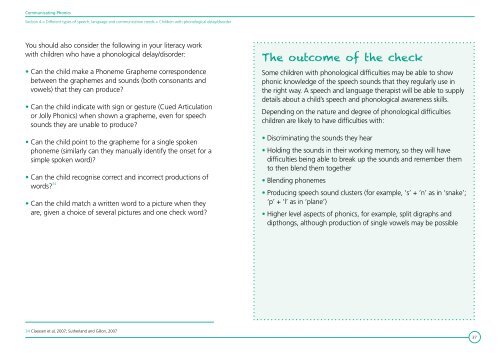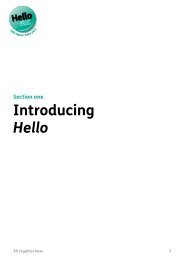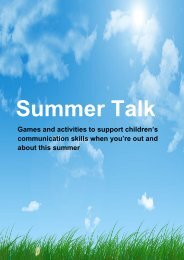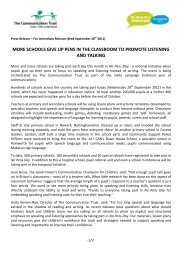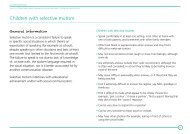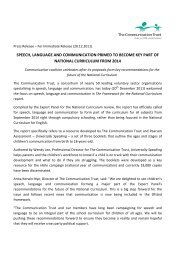Communicating Phonics - The Communication Trust
Communicating Phonics - The Communication Trust
Communicating Phonics - The Communication Trust
Create successful ePaper yourself
Turn your PDF publications into a flip-book with our unique Google optimized e-Paper software.
<strong>Communicating</strong> <strong>Phonics</strong>Section 4 > Different types of speech, language and communication needs > Children with phonological delay/disorderYou should also consider the following in your literacy workwith children who have a phonological delay/disorder:• Can the child make a Phoneme Grapheme correspondencebetween the graphemes and sounds (both consonants andvowels) that they can produce?• Can the child indicate with sign or gesture (Cued Articulationor Jolly <strong>Phonics</strong>) when shown a grapheme, even for speechsounds they are unable to produce?• Can the child point to the grapheme for a single spokenphoneme (similarly can they manually identify the onset for asimple spoken word)?• Can the child recognise correct and incorrect productions ofwords? 34• Can the child match a written word to a picture when theyare, given a choice of several pictures and one check word?<strong>The</strong> outcome of the checkSome children with phonological difficulties may be able to showphonic knowledge of the speech sounds that they regularly use inthe right way. A speech and language therapist will be able to supplydetails about a child’s speech and phonological awareness skills.Depending on the nature and degree of phonological difficultieschildren are likely to have difficulties with:• Discriminating the sounds they hear• Holding the sounds in their working memory, so they will havedifficulties being able to break up the sounds and remember themto then blend them together• Blending phonemes• Producing speech sound clusters (for example, ‘s’ + ‘n’ as in ‘snake’;‘p’ + ‘l’ as in ‘plane’)• Higher level aspects of phonics, for example, split digraphs anddipthongs, although production of single vowels may be possible34 Claessen et al, 2007; Sutherland and Gillon, 200737


